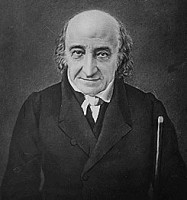 I had a long interview this morning with the Christian Science Monitor . Like many of the interviews I’ve had this year, the subject was Google. At the increasingly congested intersection of technology and the law, Google seems to be involved in most of the accidents.
I had a long interview this morning with the Christian Science Monitor . Like many of the interviews I’ve had this year, the subject was Google. At the increasingly congested intersection of technology and the law, Google seems to be involved in most of the accidents.
Just to name a few of the more recent pileups, consider the Google books deal, net neutrality and the National Broadband Plan, Viacom’s lawsuit against YouTube for copyright infringement, Google’s very public battle with the nation of China, today’s ruling from the European Court of Justice regarding trademarks, adwords, and counterfeit goods, the convictions of Google executives in Italy over a user-posted video, and the reaction of privacy advocates to the less-than-immaculate conception of Buzz.
In some ways, it should come as no surprise to Google’s legal counsel that the company is involved in increasingly serious matters of regulation and litigation. After all, Google’s corporate goal is the collection, analysis, and distribution of as much of the world’s information as possible, or, as the company puts it,” to organize the world’s information and make it universally accessible and useful.” That’s a goal it has been wildly successful at in its brief history, whether you measure success by use (91 million searches a day) or market capitalization ($174 billion).
As the world’s economy moves from one based on physical goods to one driven by information flow, the mismatch between industrial law and information behavior has become acute, and Google finds itself a frequent proxy in the conflicts.
As I argue in “The Laws of Disruption”, the unusual economic properties of information make it a poor fit for a body of law that’s based on industrial-era assumptions about physical property. That’s not to say there couldn’t be an effective law of information, only that the law of physical property isn’t it. Particularly not when industrial law assumes that the subject of any conflict or effort to control (the res as they say in legal lingo) is visible, tangible, and unlikely to cross too many local, state, or national borders—and certainly not every border at the same time, all the time.
To see the mismatch in action, consider two of Google’s on-going conflicts, both in the news this week: Google v. China and Google v. Viacom.
Google v. China
In 2006, Google made a Faustian bargain with the Chinese government. In exchange for permission to operate inside the country, Google agreed to substantially self-censor search results for topics (politics, pornography, religion) that the Chinese government considered dangerous. The company had strong financial motivations for gaining a foothold in the astronomically-fast expanding Chinese Internet market, of course, but also had a genuine belief that giving Chinese users access to the vast majority of its indexed information had the potential to encourage fewer restrictions over time.
Apparently the result was the opposite, with the government tightening, rather than loosening the reins. Google’s discomfort was compounded by the revelation in January that widespread hacking and phishing scams had penetrated the Gmail accounts of several Chinese dissidents, leading the company to announce it would soon end its censorship of Chinese searches. (It also added encryption technology to Gmail and, it is widely believed, began working closely with the National Security Agency to help identify the sources of the attacks.) Though Google has not claimed the attacks were the work of the Chinese government or entities under its control, the connection was hard to miss. Google is hacked, Google decides to end cooperation with the government.
This week, the company made good on its promise by closing its search site in China and rerouting searches from there to its site in Hong Kong. As a result of the long occupation of Hong Kong by western governments, which ended in 1997 when the U.K.’s “lease” expired, Hong Kong maintains special legal status within China. Searches originating in Hong Kong are not censored, and Hong Kong appears to be largely outside China’s “great firewall” which blocks undesirable information including YouTube and Twitter.
For residents of the mainland, however, the move is a non-event. China quickly applied the filters that Google had applied on behalf of the government for searches originating inside the country. So Google searches in China are still censored—only now Google isn’t doing the censoring. The damage to the company’s relationship with the Chinese government, meanwhile, has been severe, as has collateral damage to the relationship between China and the U.S. government. The story is by no means over.
Google v. Viacom
Also in the last week, a number of key documents were released by the court that is hearing Viacom’s long-running copyright infringement case against Google’s YouTube. The case, which began around the same time that Google made its deal with China, seeks $1 billion in damages from copyright violations against Viacom content perpetrated by YouTube users, who posted everything from short clips to music videos to entire programs, including “South Park” and “The Daily Show.”
Under U.S. law, Internet service providers are not liable for copyright infringement perpetrated by their users, provided the service provider is not aware of the infringement and that they respond “expeditiously” to takedown requests sent to them by the copyright holder. (See Section 512 of the Digital Millennium Copyright Act, http://www.copyright.gov/legislation/dmca.pdf) Viacom claims YouTube is not entitled to immunity in that it had actual knowledge of the infringing activities of its users.
Discovery in the case has revealed some warm if not smoking guns—guns that the parties resisted being made public. (See the New York Times Miguel Helft’s as-always excellent coverage, and also coverage in the Wall Street Journal.) Viacom claims it has found a number of internal YouTube emails that make clear the company knew of widespread copyright infringement by its users, though Google characterizes those messages as having been taken out of context.
Perhaps more interesting has been the embarrassing revelation that many (though still a minority) of the Viacom clips, from MTV and Comedy Central programming for example, were posted by Viacom itself. Indeed, these noninfringing posts were often put on YouTube under the guise of being posted by non-affiliated users in the hopes of giving the clips more credibility!
These “fake grassroots” accounts, as Viacom marketing executives referred to them, made use of as many as 18 outside marketing agencies. Most embarrassing is that Viacom’s own legal team has now admitted that hundreds of the YouTube postings it initially claimed in its list of infringing posts were actually authorized posting by Viacom or its affiliates, disguised to look like unauthorized postings.
(Since 2007, Google has somewhat quieted the concerns of copyright holders over YouTube by introducing filtering technologies that let copyright holders supply reference files that can be digitally compared to weed out infringing copies. This is an example, for better and for worse, of what Larry Lessig has in mind when he talks of implementing legal rules through software “code.” Better because it avoids some litigation, worse because the code may be overprotective—filtering out uses that might in fact be legal under “fair use.”)
Google v. Everyone
What do the two examples have in common? Both highlight the difficulty of judging the use of information with traditional legal tools of property and borders.
In the first example, China considers some forms of information to be dangerous. To some extent, in fact, all governments restrict the flow of information in the name of national security, consumer safety, or other government aims. China (along with Burma and Iran) are at one end of the control spectrum, while the U.S. and Europe are at the other end.
Google believes, as do many information economists, that more information is always better than less, even when some of it is of poor quality, outright wrong or which espouses dangerous viewpoints. Google’s view was perhaps best put by Oliver Wendell Holmes, Jr. in his 1919 dissent in Abrams v. United States, 250 U.S. 616 (1919):
[T]he ultimate good desired is better reached by free trade in ideas…[T]he best test of truth is the power of the thought to get itself accepted in the competition of the market, and that truth is the only ground upon which their wishes safely can be carried out. That at any rate is the theory of our Constitution.
But even legal systems that believe in the “the marketplace of ideas” as the preferred forum for determining information value can’t resist the temptation sometimes to put their finger on the scales. Congress and some states have tried and failed repeatedly to censor “indecent” content on the Internet (fortunately, the First Amendment puts a stop to it, but, as John Perry Barlow says, in cyberspace the First Amendment is a local ordinance). Just this week, Australia came under fire for proposals to beef up the requirements it places on Internet service providers to censor material deemed harmful to children. The Google convictions in Italy last month suggest that not even Europe is fully prepared to let the marketplace of ideas operate without the worst kind of ex post facto oversight.
Likewise in the Viacom litigation, it’s clear regardless of the final determination of legal arguments that some information uses that are illegal are nonetheless valuable to those whose interests are supposedly being protected by the law. Viacom can make all the noise it wants to about “pirates” “stealing” their “intellectual property,” as if this were the 1800’s and the Barbary Coast. . Those who posted copyrighted material to YouTube were not doing it with the intent of harming Viacom—their intent was just the opposite. What’s really going on is that users—fans!—who value their programming were using YouTube to share and spread their enthusiasm with others.
Yet intent plays no part in copyright infringement. The law assumes that, as with physical property, any use that is not authorized by the “owner” of the information is with few exceptions likely to be financial detrimental. That is certainly what Viacom claims in the litigation. But the company’s own behavior tells a different story. Why else would they post their own material, and pretend to be regular users? Put another way, why is information posted by an anonymous fan more valuable to Viacom than information posted by the company itself? What is it about an unsanctioned sharing that communicates valuable information to the recipient?
By posting the clips, YouTube users added their own implicit and explicit endorsement to the content. The fact that Viacom marketing executives pretended to be fans themselves demonstrates the principle that the more information is used, the more valuable it can become. That’s not always the case, of course, but here the sharing clearly adds value—in fact, it adds new information to the content (the endorsement) that benefits Viacom.
Whether that added value is outweighed by lost revenue to Viacom from users who, having seen the content on YouTube, didn’t watch it (or the commercials that fund it) on an authorized channel ought to be a key consideration in the court’s determination, but in fact it has almost no place in the law of copyright. Yet Viacom obviously saw that value itself, or it wouldn’t have posted its own clips pretending to be fans of the programming.
Productive v. Destructive Use
Both these cases highlight why traditional property ideas don’t fit well with information uses. What would work better? I present what I think is a more useful framework in the book, a view that is so far absent from the law of information. That framework would analyze information uses not under archaic laws of property but would rather weigh the use as being “productive” or “destructive” or both and determine if, on the whole, the net social value created by the use is positive. If so, it should not be treated as illegal, regardless of the law.
What do I mean? Since information can be used simultaneously by everyone and, after use, is still intact if not enhanced by the use, it’s really unhelpful to think about information being “stolen” or, in the censorship context, of being “dangerous.” Rather, the law should evaluate whether a use adds more value to information than it takes away. Information use that adds value (reviewing a movie) is productive and should be legal. A use that only takes value away (for example, identity theft and other forms of Internet fraud) is destructive and should be illegal. Uses that do both (copyright infringement in the service of promoting the underlying content) should be allowed if the net effect is positive.
Under the productive/destructive model, Google’s actions in entering and now exiting from China make more sense as both policy and business decisions. Censoring information is destructive in that it gives users the appearance of complete access where in fact the access has been limited. That harm should be weighed against the benefit of providing information that otherwise wouldn’t have been available at all to Chinese users.
That the government became more rather than less concerned about Google over time might imply that Google had gotten the balance right—that is, that the Chinese government was increasingly aware that even what it originally thought of as benign information could have the kind of transformative effects it wanted to avoid.
Is China wrong to censor “dangerous” information? Economically, the answer is yes. There is a strong correlation between countries who are on the “freer” end of the censorship spectrum and those that have gained most financially from the spread of information technology. The more information there is, the more value gets added by its use, value that is allocated (roughly, sometimes poorly) among those who added the value.
Likewise, the posting of Viacom clips on YouTube should weigh the productive value of information sharing (promotion and endorsement) against the destructive aspects–lost revenue of paid viewers on an authorized channel supported by cable fees, advertising sponsorship, and purchased copies in whatever media.
Under that kind of analysis, it might turn out that Viacom lost little and gained a great deal from the unpaid services of its fans, and that in fact any true accounting would have credited the fans for $1 billion in generated value rather than the other way around. Or maybe it was a wash. But just to consider the lost revenue, particularly using the crazy method of modern copyright law (each viewed clip is considered as a lost sale), is certain to misjudge the true extent of the harm, if any.
A lingering problem in both these examples is the difficulty of determining both the quality and quantity of the productive and destructive uses of the information in question. How much harm did Google censoring cause? How much value did YouTube users generate?
We don’t know, not because the answers aren’t knowable but because the tools for making such determinations are so far very primitive. Traditional rules of accounting follow the industrial assumptions of physical property—that is, if I have it then you don’t, and once I’ve used it, it’s gone or at least greatly depleted—that information doesn’t follow. It makes little or no allowance for the fact that information use can be non-diminishing, or even productive.
So how would we measure the harm to Chinese Internet users from the censored information, or the value of the information they could get before Google left town? How would we measure the value of “viral” marketing of Viacom programming posted by real (as opposed to “fake grassroots”) fans? How would we measure the actual losses Viacom suffered—not the statutory damages they claim under copyright law, which are surely far too generous?
Well, one problem at a time. First let’s change the rhetoric about information use, positive and negative, from the language of property to a language that’s better-suited to a global, network economy. If we do, the metrics will invent themselves.
 Over the weekend, I published an op-ed in The Des Moines Register encouraging the FCC to heed the lessons of the first national broadband plan, the one Secretary of the Treasury Albert Gallatin sent to Congress in 1808.
Over the weekend, I published an op-ed in The Des Moines Register encouraging the FCC to heed the lessons of the first national broadband plan, the one Secretary of the Treasury Albert Gallatin sent to Congress in 1808.


